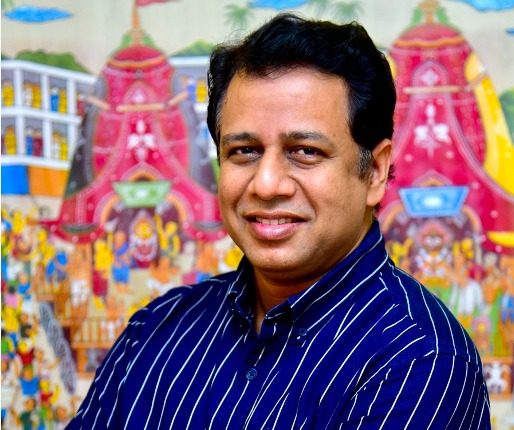Bhubaneswar: Can anything flow faster and smoother than water? Well, an Odia physicist and professor at the National Institute of Science Education and Research (NISER, Bhubaneswar) along with his collaborators from across the globe, has discovered a new state of matter that can flow smoother and faster than water at trillion degrees Celsius.
Recipient of the Infosys prize in Physics 2021 for investigations of nuclear force, the Odia physicist— Bedangadas Mohanty—discovered this new state of matter called ‘Quark-Gluon Plasma.’ To be precise, it is a hot soup of elementary particles, formed a few microseconds after the Universe came into being.
“The fundamental constituents of anything that you see around are quark, gluon and electrons. Electrons are freely available. But, quark and gluon are not found free in nature. They are always confined inside articles made up of nuclei of an atom, like protons and neutrons. So, it is very difficult to study their properties,” said Mohanty, who had also received the Shanti Swarup Bhatnagar Prize (the highest scientific prize in India) in 2015.
Mohanty along with other researchers has succeeded in creating situations in the laboratory that resemble a microsecond old Universe. “Subsequent studies showed that at such temperatures, the quark-gluon plasma is a fluid that flows more smoothly than water. In fact, the resistance to flow is the smallest possible for any known fluid, and hence it is now termed a perfect fluid,” he explained.
A member of the Large Hadron Collider (LHC) experiment in CERN, Mohanty had spearheaded several research projects. While pursuing his PhD from the Institute of Physics around 2000, he became a part of the Solenoidal Tracker at RHIC (STAR) experiment at Brookhaven National Laboratory (BNL), USA, involving 72 institutions from 15 countries, with 689 collaborators, who had built and run this experiment for the past 21 years.
“The complex nature of the experiments is such that we need a variety of personnel with diverse talents and expertise to participate in the Collaboration. Hence, it (STAR) includes students, university faculty and staff, national laboratory staff, and engineers. The experiment is primarily carried out by colliding nuclei such as ‘Gold on Gold’ at very high energy,” he said.
Mohanty was specifically sent to BNL to implement a novel photon multiplicity detector in the experiment’s simulation framework. “I was one of few people in the Indian Collaboration who had expertise in GEANT detector simulations to make feasibility studies. Prior to that, I had contributed to testing and demonstrating the working of a prototype version of the detector at CERN,” he said.
The detector, which was completely designed, built, commissioned and installed by the Indian team (Mohanty was a part of the team) in the STAR experiment, could measure light particles or photons that came out of the collisions of gold ions.
“I then looked at the first data taken by this detector along with a PhD student – Pawan Kumar Netrakanti. The excitement of an Indian detector of 85000 units working cohesively, bound together with complex electronics and data acquisition cannot be described in words. Due to my contributions, I was asked by the Collaboration to present the first results from the detector to the international community. Subsequently, the data was published in a top physics journal Physical Review Letters, with me being the corresponding author. The entire work done was in India,” he shared.
During his three year-stint at the STAR experiment, he had published about 50 papers, including 11 in Physical Review Letters. Along with his collaborators, Mohanty also discovered the two heaviest anti-matter nuclei.
After completing his masters in physics from Utkal University in 1996, Mohanty stepped into the world of research as he wanted to know more about nature and the universe. “I believe you need patience to conduct research. I am also lucky to have an extremely supportive family,” he said.
Earlier, Mohanty was elected as Fellow of the American Physical Society for 2020.
ALSO READ: NISER Bhubaneswar To Hire Scientific Assistants, Technicians; Apply Online


Comments are closed.